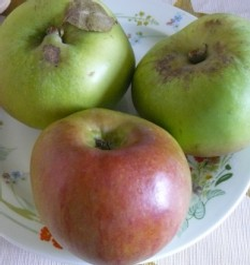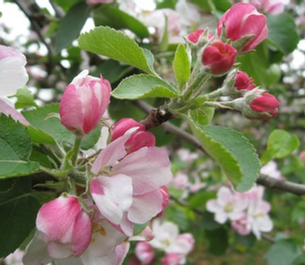

24. Bramley Original - Cooking Apple

Season : Relatively late, harvest in October
Pollination: Self Sterile, Triploid
Bramleys are used mainly for cooking purposes (although many people like to eat them fresh as well as enjoying the tangy juice).
The copious juice can also be used to advantage in cider production
The fruit is green with a red or orange flush - often not present on supermarket specimens because they have been harvested slightly under-ripe for storage purposes.
It has one of the highest acid contents of any apple variety. As a result it cooks down to a stiff but light apple puree, a key requirement for English apple cookery, with an excellent sharp flavour.
The trees are well-known for being vigorous and long-lived.


Malus domestica ‘Bramley's Original’

The definitive English "cooker"
The Bramley was actually grown from an apple seed planted in 1809 by Mary Ann Brailwood, in the garden of her parents house in Southwell, Nottinghamshire. Some 40 odd years later Matthew Bramley bought the house in Southwell and in 1856 gave permission to Henry Merryweather to take cutting from the apple tree in his garden on condition that the apples be named Bramley’s Seedling.
Despite being once blown down in a gale, the original tree still survives.
Some Bramley trees have been propagated in a direct line from
this original tree - these are listed as "Bramley original".
The original tree, in Nottinghamshire





